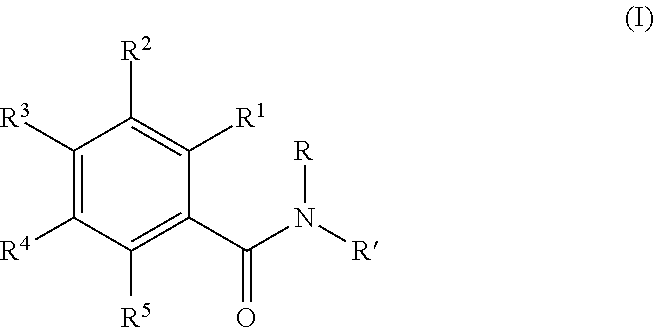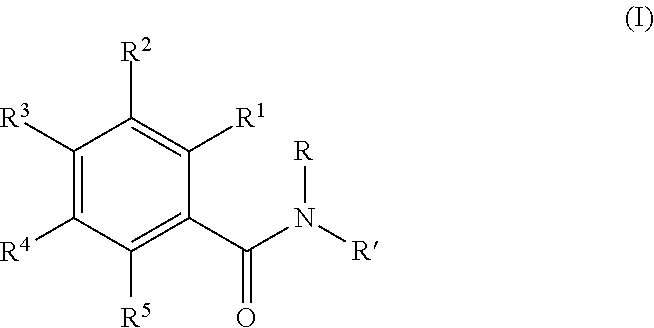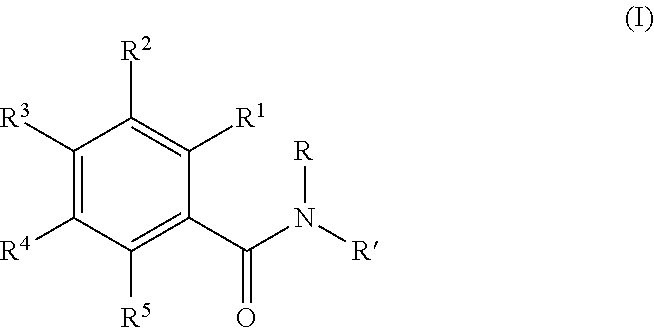Washing and cleaning compositions with improved performance
- Summary
- Abstract
- Description
- Claims
- Application Information
AI Technical Summary
Benefits of technology
Problems solved by technology
Method used
Image
Examples
example 1
Manufacture of 3,4,5-trihydroxy-N-(tris(hydroxymethyl)methyl)benzamide
[0107]1.1 equivalents tris(hydroxymethyl)aminomethane were added to 3,4,5-tribenzyloxybenzoic acid and 1.1 equivalents N-ethoxycarbonyl-2-ethoxy-1,2-dihydroquinoline in methanol. The reaction solution was heated to 50° C. The solvent was then removed under vacuum. The intermediate product, purified by column chromatography, was hydrogenated in ethanol on Pd / C. The solvent was then removed under vacuum.
example 2
Cleaning Performance
[0108]Washing tests were carried out at 40° C. as three determinations on standardized stains (indicated in Table 1) on cotton, using a bleaching-agent-free liquid washing agent (containing 7.5 wt % sevenfold-ethoxylated C12 / 14 fatty alcohol, 7.5 wt % sodium C9-13 alkylbenzenesulfonate, 1 wt % citric acid, 3 wt % C12-18 fatty acid, 0.1 wt % diethylenetriaminepenta(methylenephosphonic acid) heptasodium salt, 0.6 wt % NaOH, remainder to 100 wt % water) having a pH of 8.5, and preparing therewith a washing bath W1 made up of 79 g liquid washing agent and 1.6 g 3,4,5-trihydroxy-N-(tris(hydroxymethyl)methyl)benzamide in 17 l water of 16° dH. For comparison, an otherwise identical washing bath V1 was made up containing only the liquid washing agent, and a washing bath V2 otherwise identical to W1 that contained, instead of 3,4,5-trihydroxy-N-(tris(hydroxymethyl)methyl)benzamide, the same quantity of gallic acid ester of tetraethylene glycol monomethyl ether. The evalua...
PUM
 Login to View More
Login to View More Abstract
Description
Claims
Application Information
 Login to View More
Login to View More - R&D
- Intellectual Property
- Life Sciences
- Materials
- Tech Scout
- Unparalleled Data Quality
- Higher Quality Content
- 60% Fewer Hallucinations
Browse by: Latest US Patents, China's latest patents, Technical Efficacy Thesaurus, Application Domain, Technology Topic, Popular Technical Reports.
© 2025 PatSnap. All rights reserved.Legal|Privacy policy|Modern Slavery Act Transparency Statement|Sitemap|About US| Contact US: help@patsnap.com



